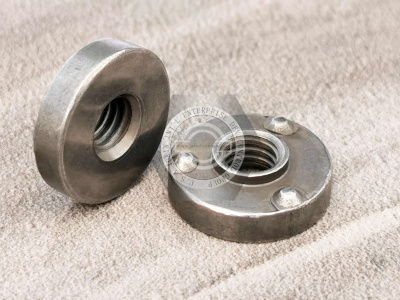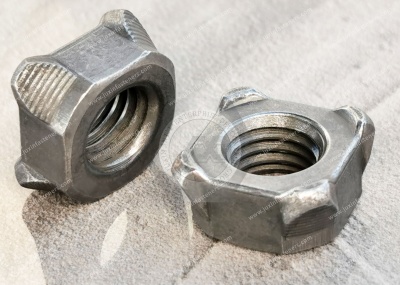Call Us
+86 136 6007 9809
Call Us
+86 136 6007 9809
May. 29, 2024
Characteristics, Applications, and Precautions of Weld Nuts in Industrial Structural Connections
What is a Welding Nut?
A welding nut is designed for welding onto a workpiece, typically made of weldable materials and sufficiently thick for welding. The welding process involves melting the metal at high temperatures to fuse the nut to the workpiece, often by adding alloys to enhance strength. The strength of the welded joint is generally higher than that of the base materials. Proper welding parameters and pre-weld cleaning are crucial for ensuring weld quality. For high-quality welding nuts and professional technical support, don't hesitate to contact us at adelajonly@gmail.com or visit our website at [Juxin Fasteners](https://www.juxinfasteners.com).


Main Characteristics and Applications of Welding Nuts:
1. Welding Capability: Weld nuts usually have a flat base, facilitating easy welding onto the surface of the workpiece. Depending on the material and application requirements, welding methods include arc welding, gas-shielded welding, and spot welding.
2. Thread Types: Weld nuts come with internal threads to connect with threaded rods or bolts. Common thread types include metric and inch threads. Selecting the correct thread type is essential for secure connections.
3. Material: Weld nuts are typically made from metals like carbon steel, stainless steel, or aluminum alloy. The choice of material depends on the environmental conditions and corrosion factors in the application
4. Applications: Weld nuts are widely used in applications requiring solid connections, such as steel structures, bridges, pipelines, ships, machinery, and automotive manufacturing. They are also used in electronic devices, instrumentation, and various industrial and consumer products.
5. Models and Specifications: Weld nuts come in various models and specifications to meet different application needs. These specifications include thread size, internal diameter, external diameter, and height.
Precautions for Using Welding Nuts:
1. Choosing the Right Nut Model and Specification: Ensure that the nut's model and specifications match the bolts to be connected for secure fastening.
2. Welding Position Selection: Weld the nut on its side or corner, not the front, to ensure it can rotate after welding.
3. Pre-Welding Cleaning and Treatment: Clean and treat the metal structure before welding to remove coatings, rust, and other contaminants, ensuring the welding area is dry.
4. Welding Temperature Control: Control the welding temperature to avoid overheating, which can deform or cause the nut to detach.
5. Post-Welding Quality Inspection: Conduct a quality inspection after welding to ensure the weld seam is strong, free from cracks, and leak-proof.
Welding nuts provide a critical solution for robust connections in industrial structures, ensuring strength and stability. Following the proper guidelines and precautions when selecting and using weld nuts is essential for achieving optimal performance in various applications.
Contact Us
Tel.:
+86 020 8621 0320
+86 020 3121 6067
Technical Support:
Navigation
SEND INQUIREY